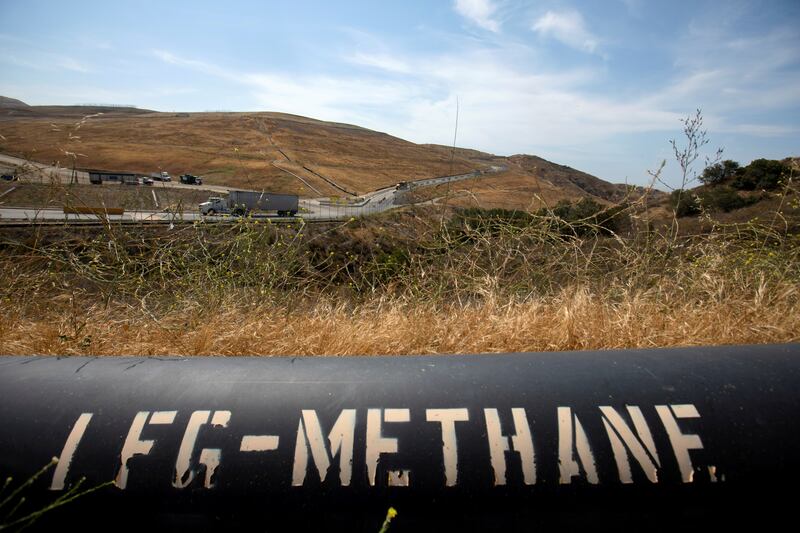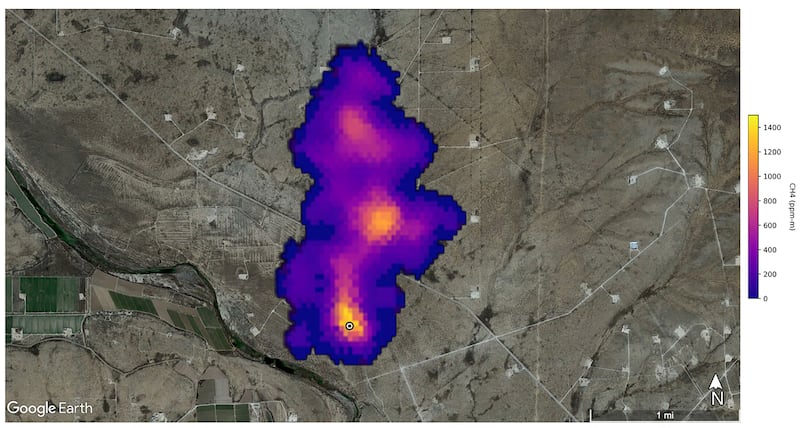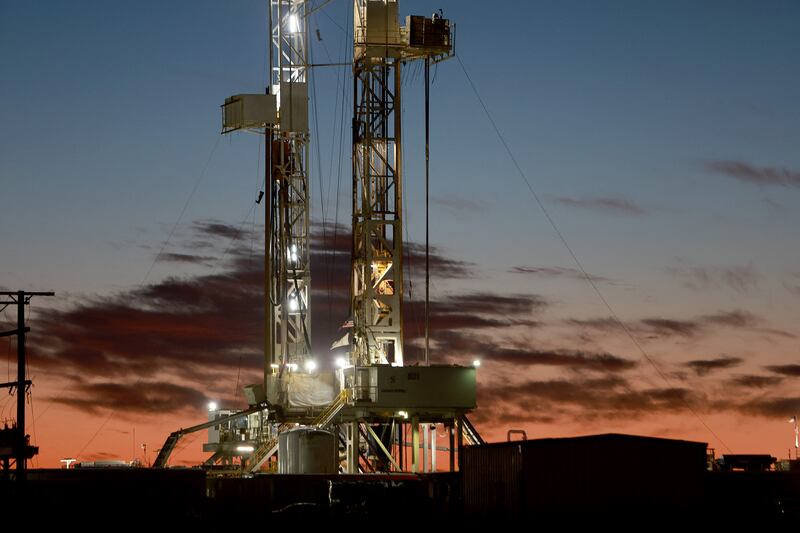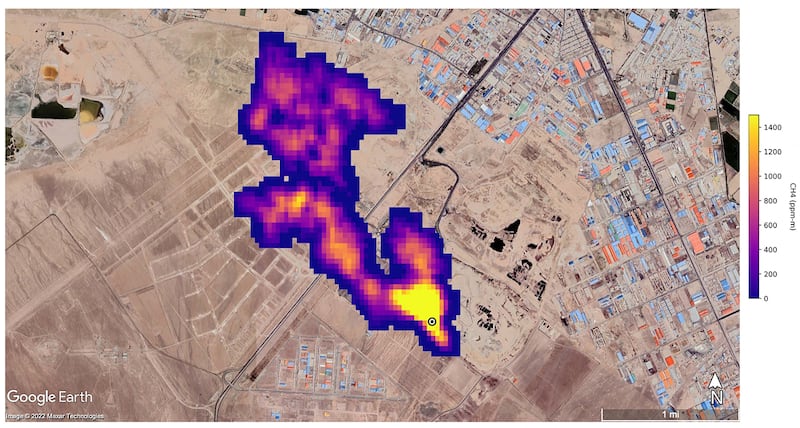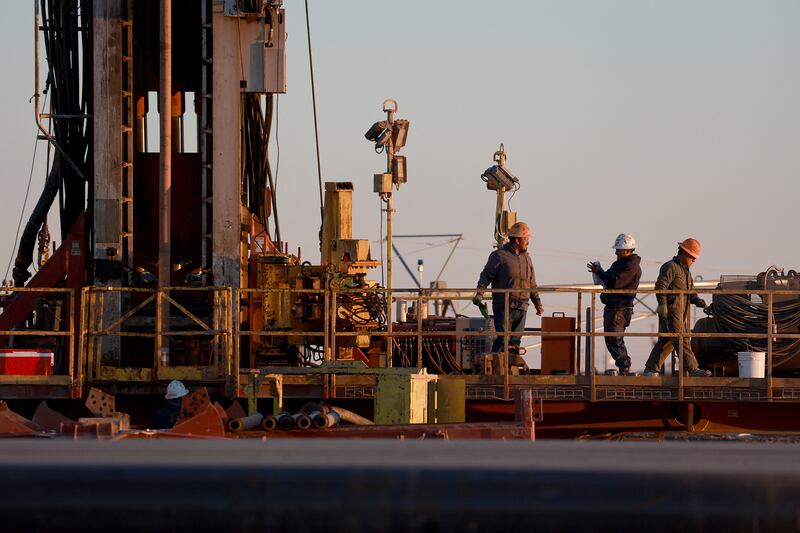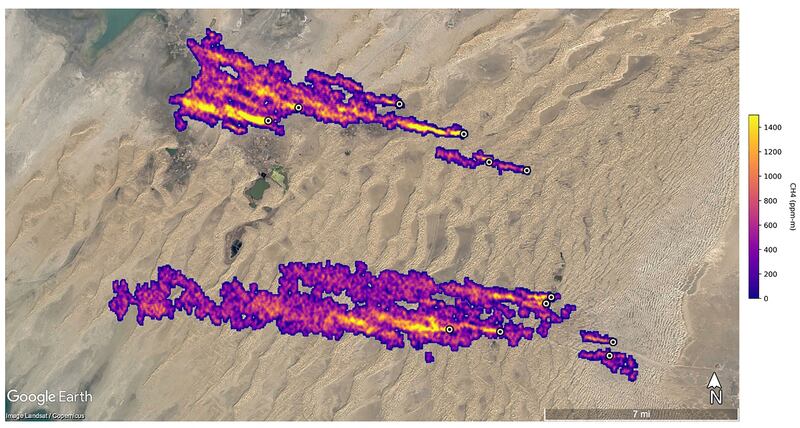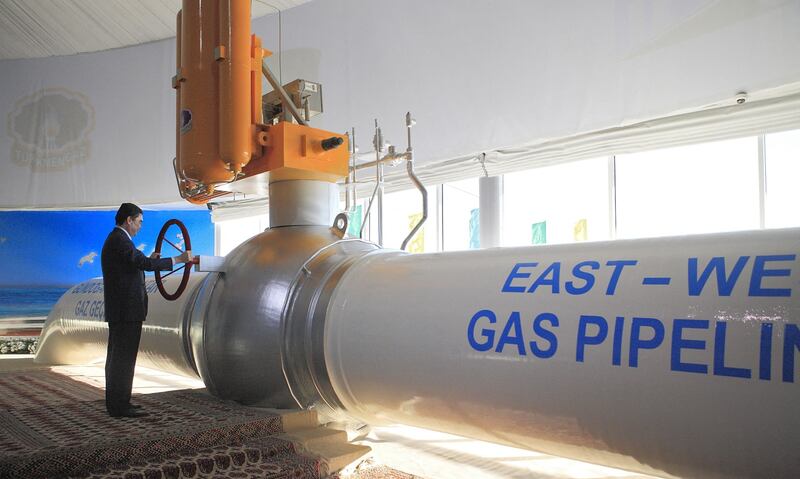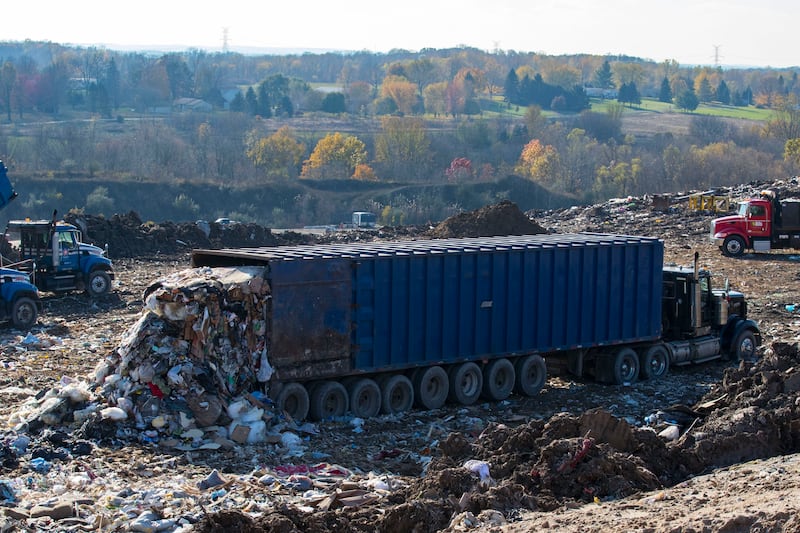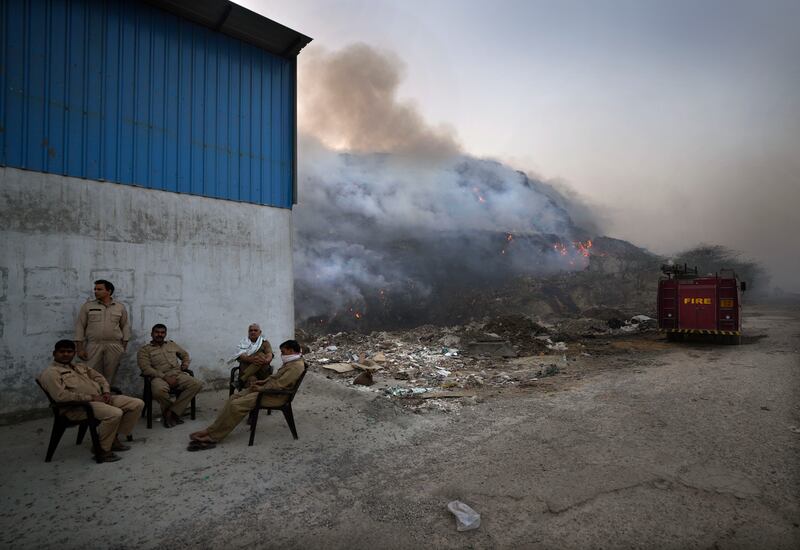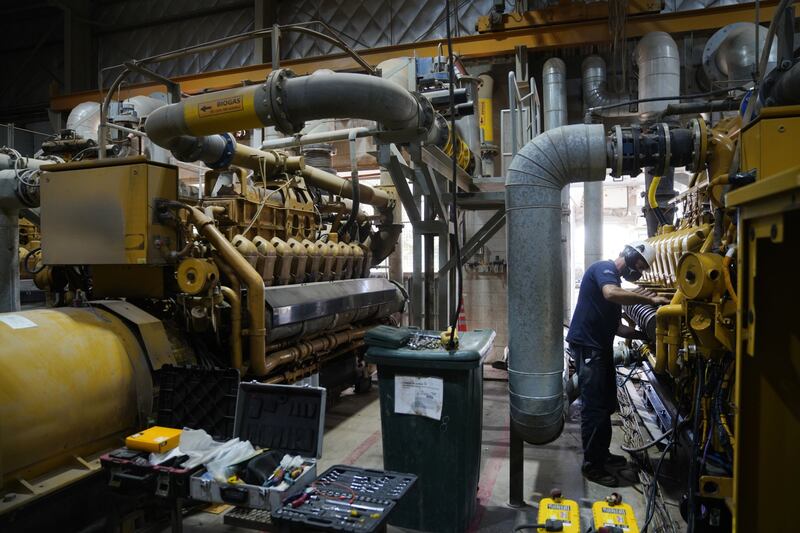Nasa scientists have begun tracking the world's largest methane emission spots from space and found sites in the US, Turkmenistan and Iran that are classed as “super emitters”.
Data is being gathered by the Earth Surface Mineral Dust Source (EMIT) mission, which involves a piece of specially designed kit called a spectrometer which was attached to the International Space Station in July.
Nasa said more than 50 “super emitters” of methane gas in Central Asia, the Middle East, and the south-western US have been identified so far. Most of them are connected to the fossil fuel, waste or agriculture sectors.
It found 12 plumes — some more than 32 kilometres wide — from oil and gas infrastructure east of the port of Hazar in Turkmenistan and another methane plume south of Iran's capital Tehran of around 4.8km.
“Some of the plumes EMIT detected are among the largest ever seen — unlike anything that has ever been observed from space,” said Andrew Thorpe, the Jet Propulsion Laboratory (JPL) research technologist leading the EMIT's methane studies.
“What we’ve found in just a short time already exceeds our expectations.”
New Mexico's Permian Basin, one of the largest oilfields in the world, showed a plume of 3.3 kilometres, emitting approximately 18,000 kilograms of methane per hour into the atmosphere.
The Turkmenistan plumes emitted around 50,400kg of methane per hour and the Iranian plume 8,500kg.
To put this in perspective, one of the four Nord Stream pipeline leaks is kicking out 22,920kg of methane per hour and originally had a plume of 520 metres.
“The continuing rise in concentrations of the main heat-trapping gases, including the record acceleration in methane levels, shows that we are heading in the wrong direction,” World Meteorological Organisation head Petteri Taalas said.
The WMO's Greenhouse Gas Bulletin found the biggest year-on-year jump in methane concentrations in 2021 since systematic measurements began nearly 40 years ago on Thursday.
The EMIT programme was designed to gather data on dust and its impact on climate, but Nasa scientists have discovered it can also read methane levels due to how they absorb infrared light. As the ISS orbits Earth, it can gain broad readings of the planet in detail, revealing the extent of known leaks and spotting new ones.
“Reining in methane emissions is key to limiting global warming. This exciting new development will not only help researchers better pinpoint where methane leaks are coming from but also provide insight on how they can be addressed — quickly,” Nasa Administrator Bill Nelson said.
Methane is one of the main drivers of climate change, accounting for about 30 per cent of global warming since the pre-industrial era. The greenhouse gas is 80 times more potent than carbon for warming the planet over a 20-year period.
Even as Covid-19 lockdowns drove carbon emissions down in 2020, methane emissions continued to climb, the US National Oceanic and Atmospheric Administration found.
But unlike carbon dioxide, methane breaks downs in the atmosphere in about 10 years, meaning action to stop it from reaching the ozone layer can make a huge difference.
The UN estimates that human-caused methane emissions may be reduced by as much as 45 per cent this decade, if the right action is taken.
“As it continues to survey the planet, EMIT will observe places in which no one thought to look for greenhouse-gas emitters before, and it will find plumes that no one expects,” said Robert Green, EMIT’s principal investigator at JPL.
